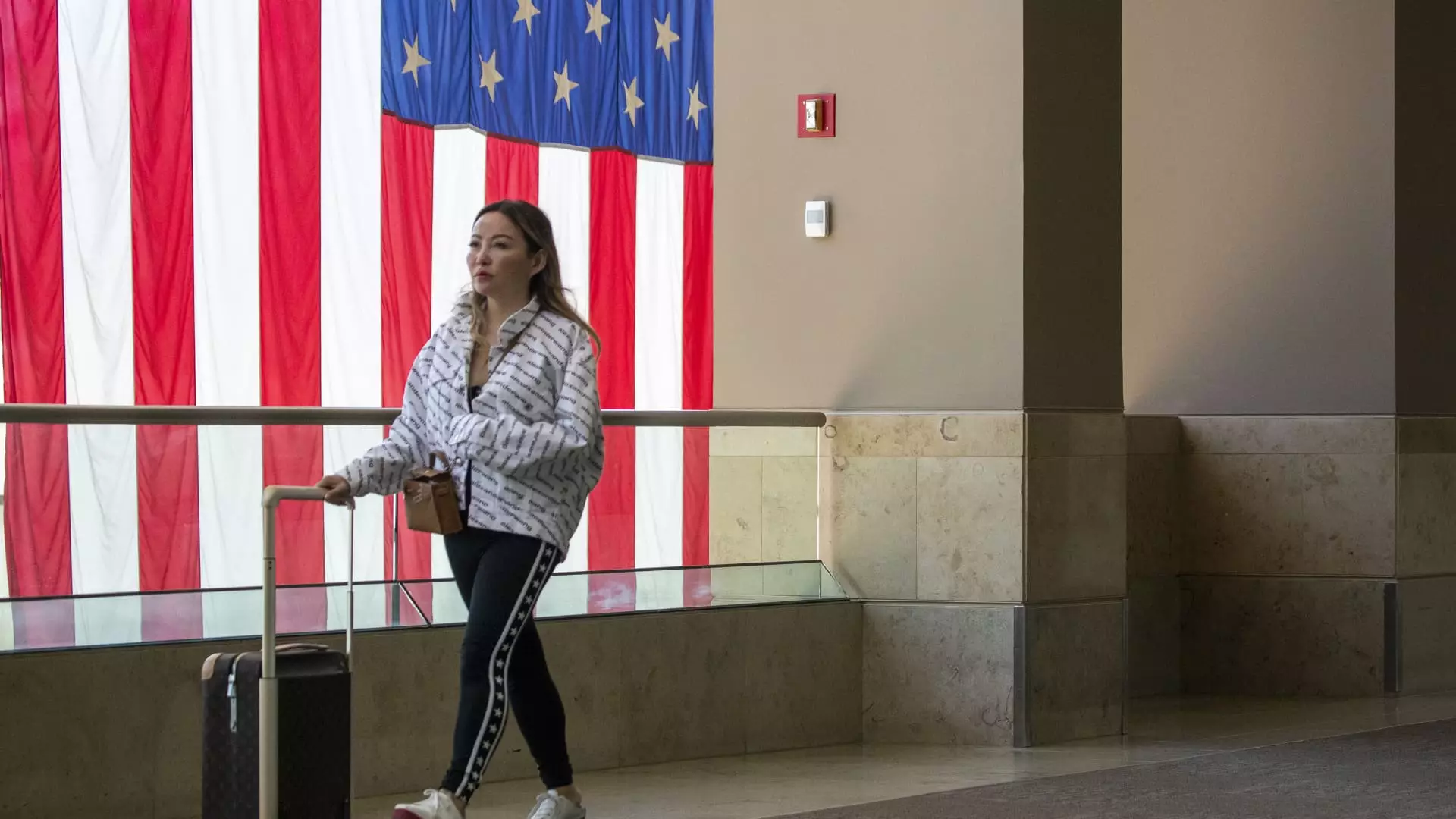The first half of 2025 has unveiled a sobering trend: a significant plunge in Canadian travelers visiting the United States. With nearly a 19% decrease compared to the same period last year, this decline not only dampens the vibrancy of international tourism but also signals deeper economic and geopolitical shifts. The drop in Canadian visitation, particularly a staggering 26% in June, underscores a broader sentiment of caution and financial restraint among Canadian consumers. This downturn is symptomatic of a complex interplay of factors—ranging from economic uncertainties to geopolitical tensions—that are influencing travel decisions well beyond mere preference.
Crucially, this decline isn’t an isolated anomaly. It directly correlates to a loss of approximately $1.9 billion in U.S. travel expenditures, illustrating that the ripple effects extend into local economies heavily reliant on foreign visitors. While some might attribute this downturn solely to currency fluctuations or travel restrictions, it’s essential to view it through a broader lens: the economic health of consumers, inflationary pressures, and evolving political sentiments in Canada all seem to factor into their hesitance to venture southward.
The Resilient Rise of Mexican Tourism: A Sign of Shifting Geographical Dynamics
In stark contrast to the dwindling numbers from Canada, inbound travel from Mexico has demonstrated remarkable growth — up by nearly 15% in June and over 12% in the first half of 2025. With nearly one million visits, these travelers contributed close to half a billion dollars in spending, highlighting the strategic importance of Mexico as a reliable source market for U.S. tourism.
This surge suggests a diversification strategy by American travel industries, which previously heavily depended on Canadian tourism. The upward trend from Mexico indicates a changing dynamic—possibly driven by increased affordability, improved air connectivity, or perhaps a desire among Mexican tourists to explore the U.S. amid economic challenges at home. This shift has significant implications; it challenges the long-standing narrative of North American tourism being dominated solely by the Canadian segment and compels industry stakeholders to reconsider marketing and outreach efforts.
Economic Uncertainty and Political Factors: The Underlying Current
What remains evident is that broader economic and political factors are fundamentally shaping international travel flows. The U.S. travel industry’s concern over the potential impact of President Donald Trump’s initiated policies—specifically cuts in marketing budgets and increased visa fees—further complicates the outlook. These measures threaten to stunt future growth, especially with upcoming global events like the World Cup, which typically boost international arrivals.
Moreover, with major hotel brands like Wyndham, Hilton, and leisure companies poised to report their earnings, the tangible impact of declining Canadian travelers could manifest in subdued financial results and strained profitability. The recent trends suggest that unless there is a strategic realignment—either through policy adjustments or innovative marketing—U.S. destinations risk losing their competitive edge in attracting international tourists, particularly from Canada.
The Bigger Picture: An Industry at a Crossroads
Overall, the data from early 2025 reflect not just a temporary blip but a pivotal moment for the global travel industry. It underscores the necessity of understanding geopolitical sensitivities and economic resilience. North American tourism is entering a phase where adaptability—focusing on emerging markets like Mexico and other developing regions—becomes the key to sustaining growth.
The decline in Canadian traffic, while concerning, offers an opportunity as well: a chance for the industry to reassess and diversify its audience. Future strategies must go beyond traditional markets, embracing innovative approaches that account for shifting economic realities and geopolitical landscapes.
Ultimately, resilience in travel depends on recognizing these changes early and responding with bold, strategic initiatives that can withstand economic headwinds and geopolitical fluctuations. If industry players can align with these realities, they can foster a more resilient, inclusive, and dynamic tourism ecosystem.

